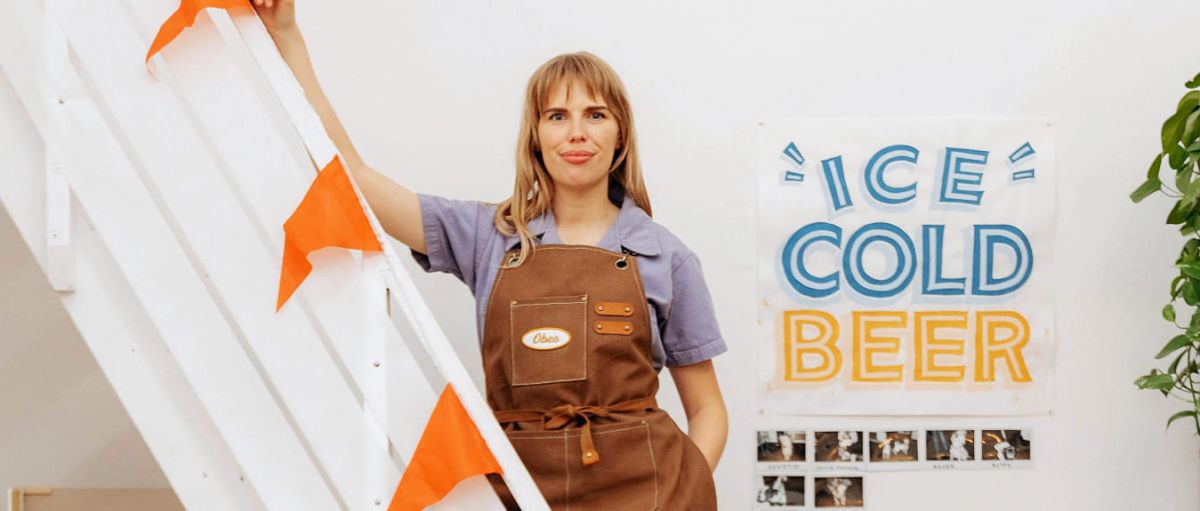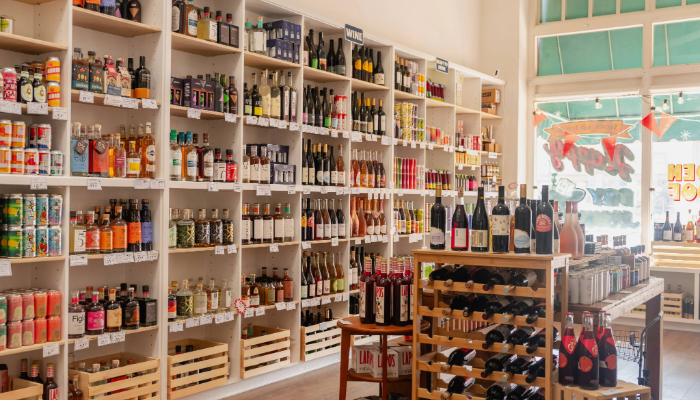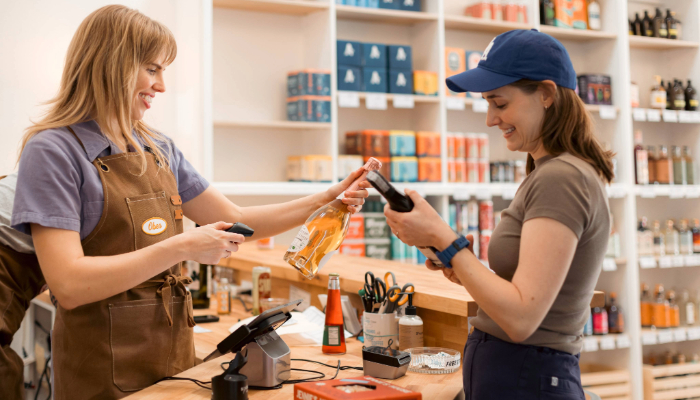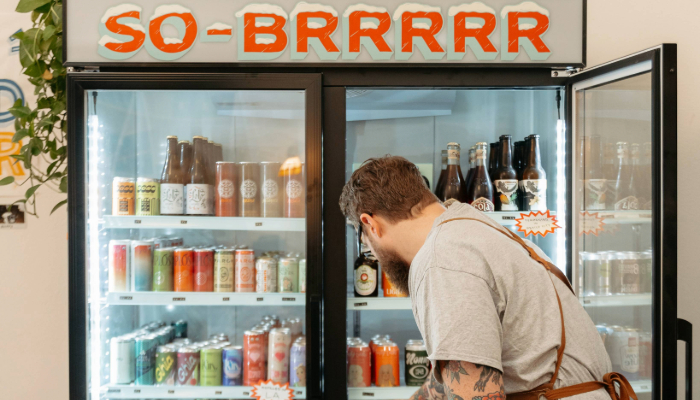Warehouse
Closed
July 10, 2026
Judging
Date
July 26, 2026
Winners
Announced
August 12, 2026

The no- and low-alcohol movement is no longer just a trend—it’s a seismic shift reshaping the beverage industry. As consumers embrace mindful drinking, a niche yet fast-growing market is creating new opportunities for brands and retailers alike. Leading the charge in South Pasadena is Burden of Proof, a dedicated non-alcoholic retail store offering a carefully curated selection of zero-proof and low-alcohol beverages.
USA Spirits Ratings sat down with founder Obreanna McReynolds to explore the evolving landscape of this category. From consumer behavior to brand strategy, she shares actionable insights on the challenges and opportunities facing no- and low-alcohol brands today—offering a crystal-clear perspective on where the market is headed.
Edited excerpts from the interview.
Taste is the top priority—I need to believe in the product and confidently recommend it. Beyond that, I focus on a balanced selection, ensuring variety while maintaining depth within each category. For instance, if we carry multiple non-alcoholic whiskeys, each must offer something unique. The brand’s story also matters. In the non-alcoholic space, many brands are small and independent, and customers are genuinely curious about their origins. Unlike mass-market brands, they want to know who’s behind the product and what inspired it.
Finally, I consider how well a brand can support its presence in our shop. Since non-alcoholic retail is still niche, we value partners who invest in their success—whether through product samples, promoting our store, or providing a local rep for in-store demos. That kind of collaboration helps build awareness and drive sales.
Non-alcoholic sake is a major gap—we get frequent customer requests, but options are extremely limited. High-quality non-alcoholic cider is another underserved category, along with gluten-free beer. While demand for non-alcoholic beer is strong, there are almost no gluten-free options, unlike in the alcoholic beer market.
Wine and spirits, on the other hand, are already crowded. The real breakthrough will come from advancements in de-alcoholization—whoever refines that process, especially for wine, will have a bestseller. There's still room to improve quality.
Pricing is another challenge. Customers often question why non-alcoholic products cost as much as alcoholic ones. The reality is that dealcoholization is complex and requires significant R&D. However, as technology advances, I expect prices to drop over the next five years. There’s a clear opportunity for more affordable, entry-level options that make non-alcoholic choices accessible to a wider audience.

Burden of Proof, South Pasadena
Demand for non-alcoholic drinks is highly seasonal—when whiskey and red wine trend in the alcoholic market, their non-alcoholic counterparts see a spike in demand.
A major trend, especially among Gen Z, is functional beverages with adaptogens and nootropics for a mild buzz. Kava is especially popular, along with functional mushrooms like reishi and lion’s mane. Two top-selling brands are Kava Haven and Little Saints, both offering innovative alternatives to traditional alcohol. There's also growing interest in spirits designed for sipping neat. While many customers start by looking for direct non-alcoholic analogs of whiskey or gin, they often find that dealcoholization affects texture and depth. Instead, complex alternatives like Drømme and The Pathfinder, which aren’t direct replicas but still offer warmth and complexity, are gaining traction. Overall, key trends include seasonal preferences, functional beverages, and the rise of sophisticated, sippable non-alcoholic spirits.
Many consumers are still unfamiliar with the non-alcoholic space, despite its growing media attention. Brands often assume that terms like "functional RTD" are widely understood, but that’s not always the case. I tell brands to picture someone like my mom—someone who doesn’t follow industry trends—because that’s still a huge segment of the market. One common mistake is unclear packaging. Cool, abstract designs might look great, but if consumers don’t instantly understand what the product is or how it tastes, they’re less likely to buy it. The best-selling products have clear, descriptive labels.
Another misconception is target demographics. Many brands focus on Gen Z and young, health-conscious women, but at our shop, we see strong interest from male customers, too. Expanding beyond the typical wellness aesthetic—like Liquid Death did for water—can create broader appeal. Ultimately, smart branding and clear communication are key to reaching a wider audience.
Boomers tend to be the most skeptical customers, but they’re also at a stage where they may need to cut back on alcohol for health or personal reasons. They’re most interested in direct analogs—non-alcoholic whiskey for their Old Fashioneds or a high-quality alcohol-free red wine that still feels indulgent. They don’t want to change their lifestyle, just continue their rituals without compromise.
Younger generations, on the other hand, prefer creative options—functional drinks, botanical spirits, or unique beverages that don’t mimic alcohol. Interestingly, many boomers are influenced by their kids, who drink less or not at all. Since they often host gatherings, they’re seeking non-alcoholic options to accommodate everyone. Once they see high-quality alternatives that fit their traditions, they become much more open to the category.

Obreanna McReynolds, Founder of Burden of Proof
I wouldn’t say I’ve seen any major missteps, but there are definitely things that make a pitch stand out. We get a lot of inbound outreach, so what really catches my attention is when a brand goes beyond just describing the product and tells me about their customer. I want to know—who is your product for? What need does it fulfill? That helps me visualize whether your target audience aligns with our customers and how I might position your brand in our shop. You could have an incredible product, but if I can’t see a clear way to tell its story or connect it with our audience, it’s unlikely to be a fit for us. I understand that mass outreach is necessary, and form emails are part of that process. But what really makes a brand stand out is when they show they’ve done a bit of research—why do they think their product would be a strong fit for our shop specifically? If they can demonstrate that alignment, it makes a huge difference in how we evaluate the opportunity.
Packaging is key—it needs shelf appeal but also clear communication. If a bottle looks great but doesn’t explain what it is, it’s harder to sell. Ingredient transparency is another plus. While not a dealbreaker, clean ingredients, organic certification, or low sugar make a product more appealing.
A strong Unique Selling Proposition (USP) is essential. I need to sum up a product in one sentence when a customer asks, “Why this over something else?” For example, we carry Uso, a sparkling tea with the USP: “Sparkling tea inspired by natural wines.” That immediately provides context. If a brand can’t articulate its USP, its more challenging for me to articulate and sell it.
Finally, brand support matters. Providing free samples is crucial in this new category, and brands that go further—offering tastings, training staff, or hosting demos—stand out. It shows commitment and helps customers connect with the product, making a big difference in sales.
The most effective thing a brand can do is provide free samples. Our sampling program moves the most inventory—at least 50% of people who taste a product end up buying it. Beyond sampling, brands can support retailers in simple but impactful ways. Adding us to their store locator without us asking is huge—many customers still rely on them to find products. Leveraging social media also helps. Whether it’s a stockist announcement, a collaboration post, or simply tagging us, it drives awareness that their product is available at our store.
Lastly, collaborating on events is key. In the non-alcoholic space, education and community-building matter. We host events to create a welcoming space beyond alcohol, and brands that support these—by providing products or engaging with customers—see stronger sales and loyalty. The best partnerships go beyond transactions, building real connections with both retailers and consumers.
Non-alcoholic products aren’t necessarily more expensive than alcoholic ones, but their comparable pricing often surprises customers. Many assume that without alcohol, a product should be cheaper—but the real costs come from craftsmanship, ingredients, and production.
We focus on offering options across different price points rather than just the cheapest. We stock $4 beers alongside $70 wines, and some brands even launch at lower price points to gauge demand before adjusting. One pricing trend gaining traction is mini bottles, especially for non-alcoholic spirits and wines. Customers love them because they’re a low-risk way to try something new. A $40 bottle might feel like a gamble, but a mini under $15? That’s an easy yes. Many even spend more on variety packs filled with minis just to sample different flavors.
For brands launching new products, mini bottles or sampler packs are a great way to reduce hesitation and convert first-time buyers into repeat customers.

Burden of Proof, South Pasadena
A few key things stand out. First, offer mini bottles—they lower the barrier to entry and make it easier for consumers to try your product. Second, packaging clarity is crucial. Consumers shouldn’t have to guess what a product is, what it tastes like, or how to use it. The Pathfinder does this well, providing clear guidance for new customers.
For brands transitioning from alcohol to non-alcoholic, the approach must shift. Unlike alcohol, sampling drives sales, and education is key. That’s why partnering with specialty non-alcoholic retailers is so valuable. Big-box stores offer visibility but lack the hands-on guidance these shops provide.
In a specialty shop, customers get recommendations tailored to their tastes, leading to better experiences and repeat purchases. In contrast, grabbing an unfamiliar product off a grocery shelf risks disappointment and disengagement.
So my top advice? Invest in education and build strong retail partnerships—helping them succeed helps you grow in the no- and low-alcohol market.
It’s mostly surface level. Consumers appreciate seeing "organic" on the label or a simple, recognizable ingredient list, but I rarely see them digging into sustainability certifications or technical eco-friendly details. That said, if two products are comparable in taste and price, sustainability can be a deciding factor.
Right now, though, taste is the top priority—there’s still skepticism about whether non-alcoholic options can truly match traditional alcoholic beverages. Maybe in a few years, when the category is more established, sustainability will play a bigger role in purchasing decisions. But for now, it’s more of a nice-to-have than a deal-breaker.
Header image sourced from Obreanna McReynolds, Founder of Burden of Proof.
Also Read:
Kontapel, Ukrainian Brand Now Calling USA Spirits Importers & Distributors
15 Game-Changing Canned Cocktails Every Retailer Should Stock
The 2025 Winners List is Now Live! Explore the Full List!